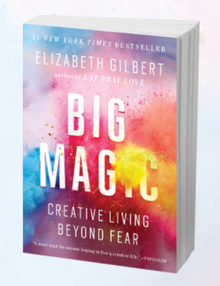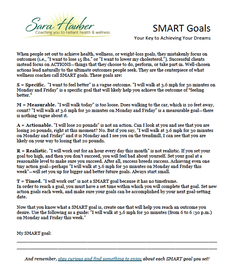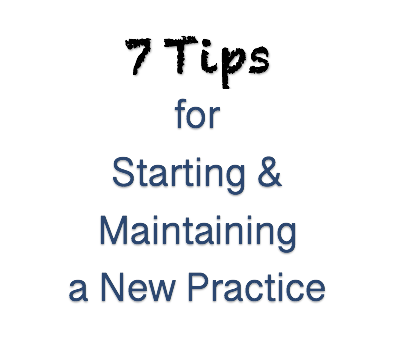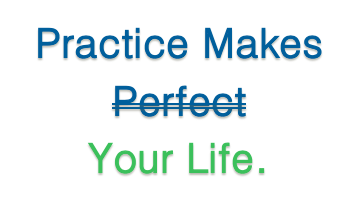|
In March, I started to talk with you about the concept of practice and what it means when you practice something so long it becomes a habit.
If you decided that what you’ve been practicing--whether an unhealthy behavior, an unhelpful way of thinking, or an absence of any healthy behaviors whatsoever--is no longer working for you and you’re ready for change, then you’ll want to read today's post. Because here, I’ll break down for you exactly what steps you need to take in order to give yourself the best possible chance to succeed at starting and then maintaining a new, healthy practice--even if you're totally scared to start or afraid to fail.
0 Comments
Back in the year 2000, when I was a fledgling personal fitness trainer, I started to study coaching. I could tell that my weight-loss clients were not finding it easy to stick to recommendations like walking more, eating less sugar, drinking less alcohol. I knew they wanted to change, but they didn’t seem able to. I wanted to help. Luckily, two behavioral researchers, Prochaska and DiClemente, put their brilliant minds together in the early 1980s and delineated a simple little theory that would go on to help millions of people work through sometimes difficult lifestyle behavior changes. I wrote an article in 2007 to help fitness professionals learn how to use Prochaska & DiClemente’s Transtheoretical Model of Behavior Change (which is commonly referred to as “The Stages of Change”). Now, I’m going to help you learn how to use this brilliant little theory in your own life, when you’re toying with the idea of changing some behavior or adding a new creative or healthy practice to your life.  She's not resisting change--she's just not at the right stage to attempt it. She's not resisting change--she's just not at the right stage to attempt it. The Stages of Behavior Change There are 5 stages in the Stages of Change. To illustrate the stages clearly, let’s take “adding a yoga practice to your wellness routine” as a possible behavior. Precontemplation: In this stage, the concept of starting a yoga practice is not even on your radar. You might hear your friends talk about it and think, “Oh, that’s nice for them” and then not even give it a second thought. In other words, you’re nowhere near actually starting to practice yoga. It’s not interesting, you don’t see the benefits, and you have no interest at all. What we practice is what we get good at. You likely already know this, but have you really thought about what that means in your life? To your own wellbeing? In your relationships?
Maybe you spend the majority of your time worrying. Or serving others. How much time are you devoting to holding grudges? Is putting your health first (or last) a regular top contender in your daily list of things to do? You can become habitual and masterful at anything you spend enough time practicing. Whether an instrument, a sport, or a way of thinking or behaving, everything we practice sets electrical patterns or grooves into our central nervous system. Over time, and with enough practice, any action or reaction to a situation becomes stuck in those grooves, habitual, automatic. And when what you are practicing is anger, hate, fear, prejudice, judgment, or self neglect . . . imagine what happens in your body as you wake up and default to those ways of feeling and being every day. 
First, let me say than I loved Eat, Pray, Love. Both the book and the entirely adequate adaptation made me laugh, cry, and feel pain and joy.
Second, let me also say that, as a marriage skeptic who actually got married a year before I found Committed, I relished reading that book more than any other non-fiction book I had until that point read. What a gift to independent, intelligent, not-the-marrying-type women everywhere, like me. It’s a splendid work of research, writing, and storytelling. And I don’t find it meaningful at all that Ms. Gilbert’s marriage has since ended. (Well, it’s meaningful to her and her former husband, but it says nothing about the quality of the book or the quality and validity of her actions.) Finally, though, today, I want to talk about Big Magic. Because this, of the three* books I have read by the lovely and wonderful Ms. Gilbert, is the book that contains [Update December 2023: This has been my most popular blog post for 6 years running. If you're reading this now, pop a comment below letting me know what brought you here today.]
Peeling back the layers of an onion. It’s a metaphor for life and growth that might not be perfect but never gets old. As you might know, my life has been dedicated to mind-body healing. Growth on a deep level. Investigating those things that hold us all back from getting the life and love we want. The most poignant part of the onion metaphor for me is that peeling onions can sting and make you cry. With every layer of adult defenses we peel back, we can potentially face great pain and lots of tears. But it’s worth it, because life, just like an onion, is so tasty when its outer layer has been peeled way and we decide to use it in a way that is totally different from how it started. With life, it seems it’s only in the unpeeling (discovering), chopping (analyzing), and making us cry (healing) that we learn, grow, and become our true selves. Is it uncomfortable? Hell yes, just like peeling and chopping an onion can be. Is it worth the discomfort?
But the truth of the matter is, I am hopeful that the process I am going through right this minute (and have gone through about 43,200 minutes already) will cease to feel desperate, not remind me of crack addiction, no longer have me mourning, allow me once again to eat meals with my husband, and have me not feeling as though I am being tortured most hours of most days of the week.
I’m hopeful that I will, indeed, overcome the sugar addiction that I have been unconsciously feeding for over a decade now. It went into overdrive when I met and married another sugar addict (isn’t that how it always goes?) and discovered I needed to drop sugar to heal a damaged gut (more on that later). Did you know that the secret to increasing your health and wellbeing is to use effective SMART goals? When people set out to achieve health, wellness, or fitness goals, they mistakenly focus on outcomes (i.e., "I want to lose 15 Ibs," or "I want to lower my cholesterol," or “I want to live without back pain.”). Successful clients instead focus on actions—things that they choose to do, practice, or take part in. Well-chosen actions lead naturally to the ultimate outcomes people seek. They are the centerpiece of what we wellness coaches call SMART goals. These goals are: S = Specific. "I want to feel better" is a vague outcome. "I will walk at 3.6 mph for 30 minutes on Monday and Friday" is a specific goal that will likely help you achieve the outcome of “feeling better.” M = Measurable. "I will walk today" is too loose. Does walking to the car, which is 20 feet away, count? "I will walk at 3.6 mph for 30 minutes on Monday and Friday" is a measurable goal—there is nothing vague about it. A = Actionable. "I will lose 20 pounds" is not an action. Can I look at you and see that you are losing 20 pounds, right at this moment? No. But if you say, "I will walk at 3.6 mph for 30 minutes on Monday and Friday" and it is Monday and I see you on the treadmill, I can see that you are likely on your way to losing that 20 pounds. R = Realistic. "I will work out for an hour every day this month" is not realistic. If you set your goal too high, and then you don't succeed, you will feel bad about yourself. Set your goal at a reasonable level to make sure you succeed. After all, success breeds success. Achieving even one tiny action goal—perhaps "I will walk at 3.6 mph for 30 minutes on Monday and Friday this week"—will set you up for bigger and better future goals. Always start small. T = Timed. "I will work out" is not a SMART goal because it has no timeframe. In order to reach a goal, you must have a set time within which you will complete that goal. Set new action goals each week, and make sure your goals can be accomplished by your next goal-setting date.  Click the image to download your free SMART goals worksheet. Click the image to download your free SMART goals worksheet. Now that you know what a SMART goal is, download the SMART goal worksheet I created and craft a SMART goal that will help you reach an outcome you desire. Be sure to follow the tips in my super-explanatory post about how to make sure you can start and maintain a new practice first. And remember, stay curious and find something to enjoy about each SMART goal you set! Looking perfect or feeling good. That struggle has been on my mind a lot lately as I welcome a host of new internal and external conditions that have a direct impact on my identity as a "health and fitness professional":
The items in the above list have undermined the major belief that drove me to exercise obsessively for the first 10 years of my professional fitness career: my body was really messed up from scoliosis and other health issues, and I had to work really hard to make it appear "perfect" or I wouldn't be respected, successful, or loved. I think perhaps a majority of women are led to believe something very similar, and that is what countless "love your body" campaigns and groups are designed to help defuse. But as anyone who has made a major shift in her life knows, old beliefs and thought patterns die hard. Really hard. It takes more than a simple ad campaign or a support group to change our core beliefs.
Especially when every bit of advertising and social conditioning in our society says, "Women are their bodies, nothing more, and we demand that those bodies appear PERFECT!" And as a professional in the fitness and wellness industry (and, sadly, also in "Westernized" yoga)? Forget about it: We are ALL supposed to be perfect icons of bodily perfection: no body fat, no cellulite, no structural malformations, no outward appearance of aging, perfect curves in exactly the right places, and energy so abundant we work out hours a day without a care in the world. Hmph. I don't think anyone can adhere to those expectations without being sick and obsessed. So here I reveal the strategies that work to ensure that I don't fall into the "trying to appear perfect" trap again. If you recognize yourself struggling with anything I've mentioned so far, maybe one or more of these can help you, too.
When faced with the choice to "look perfect" or "feel good," I'm opting for feeling good from here on out. What about you? ** I had so many wonderful, heartfelt comments to this post on its original Wordpress page. It's too bad I could not preserve them when I moved the site. Perhaps new readers would like to add some helpful comments of their own? |
To search all content for your favorite keywords, use the search bar below.
Categories
All
Archives
May 2019
|
|
To search all website content, use the search bar here.
|
This entire website and all of it contents are copyrighted to Sara D. Hauber, 2011-2024.
If you would like to use or reproduce any of the materials here, please contact Ms. Hauber for permissions. |




 RSS Feed
RSS Feed